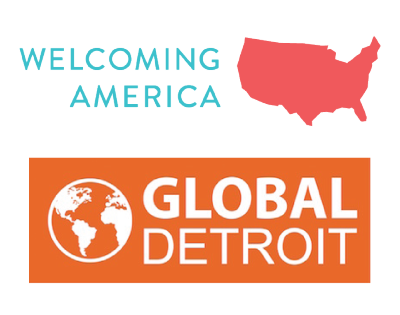Anti-Immigrant Policies and Rhetoric Impact Midwest Economies
In fall of 2017, the Welcoming Economies Global Network circulated research that sought to quantify the economic impacts that President Trump’s immigration policies were having on 10 states from New York to Missouri. The research focused on (1) decline in international tourism; (2) loss of international students; (3) decline in refugee resettlement numbers; (4) loss in agriculture production; and (5) projected loss from revoking DACA status.
While some of those projections have thankfully not come to bear (e.g., DACA recipients have not been deported in significant numbers), other projections have, unfortunately, come to fruition (e.g., the cuts in refugee resettlement have been even larger than predicted a little more than a year ago).
A recent article and report shed new (or enhanced) light onto the economic costs of President Trump’s anti-immigrant policies and rhetoric. The costs of these policies extend from losing highly educated and talented international students to other countries to negative impacts on working-class neighborhoods throughout Rust Belt cities–neighborhoods who benefit most from population growth fueled by immigrants.
In 2017, we projected that WE Global Network states would lose nearly $1 billion in annual spending from a projected 7 percent decline in international student enrollment. The projections were based on early Institute for International Education (IIE) estimates. A little of a year later, IIE has witnessed a drop in new foreign student enrollment in the U.S. of 6.6 percent in the 2017-18 academic year, double the previous year’s rate of decline. The drop in new enrollees was the biggest since 9/11 and the decline seems to be continuing this year. In fact, the number of new F-1 visas issued in Fiscal Year 2017 was less than 400,000, down from a high of 644,000 in Fiscal Year 2015 according to data from the U.S. State Department.
F1 Student Visas (Academic or Language Training Program) Issued
Fiscal Year 2013 2014 2015 2016 2017
534,320 595,569 644,233 471,728 393,573
Source: U.S. Department of State at https://travel.state.gov/content/dam/visas/Statistics/AnnualReports/FY2017AnnualReport/FY17AnnualReport-TableXVIB.pdf
According to IIE data, the combined annual spending in 10 WE Global states for international students is nearly $14 billion, so a loss of international students on the magnitude experienced between Fiscal Year 2015 and 2017 would be a loss of over $5 billion in annual spending and some 50,000 jobs in WE Global states alone! So severe is the problem, that in 2017 Moody’s Investor Services downgraded its credit outlook for higher education from stable to negative, citing stringent immigration policies and declining international student enrollment (which helped stabilize revenues through higher tuition).
According to NAFSA: Association of International Educators, the U.S. losses of international students have been to the benefit of our competitors in Canada and Australia, whose international student populations grew 20 percent and 15 percent, respectively, in the 2016-17 academic year alone. Add the fact that the majority of graduate students in engineering, computer science, and IT at U.S. colleges and universities are international students and the impacts of these shifts have potential tsunami-like effects to the future supply of U.S. high-skilled, high-demand talent.
Negative impacts from anti-immigrant policies, however, are not limited to highly-skilled and highly-educated immigrants. A January 2018 white paper from the Local Initiatives Support Corporation (LISC) chronicles how ethnic and immigrant neighborhoods and community development efforts are being hampered by Trump policies around the public charge and enhanced immigration enforcement. Noting that “community organizations may experience significant cost multipliers due to the proposed ‘public charge’ rule change”, the LISC report chronicles how changes to DACA, decline in refugee and asylum-seekers, repeal of Temporary Protected Status, and aggressive ICE detention policies threaten millions of children and adults.
LISC conducted interviews with community development practitioners in Chicago, Houston, Kansas City, Los Angeles, and New York and uncovered evidence of residents foregoing health benefits, shelter, and FEMA assistance—benefits to which legal immigrants and/or the U.S.-born children are legally entitled—out of fear and misinformation. In turn, this made communities where LISC and its community development partners operate less healthy, less safe, and more distressed—making the work of community development that much harder.
Anti-immigrant policies and rhetoric are negatively impacting two bright spots in the economic revitalization of Midwestern and Rust Belt cities. If they can’t attract high-skilled talent and international students and can’t welcome the growth of immigrant families as part of their community development plans to revitalize distressed neighborhoods, cities like Detroit, Cleveland, St. Louis, and Philadelphia will lose some of the most effective and important opportunities to achieve modest economic growth and build cities for the 21st century.




